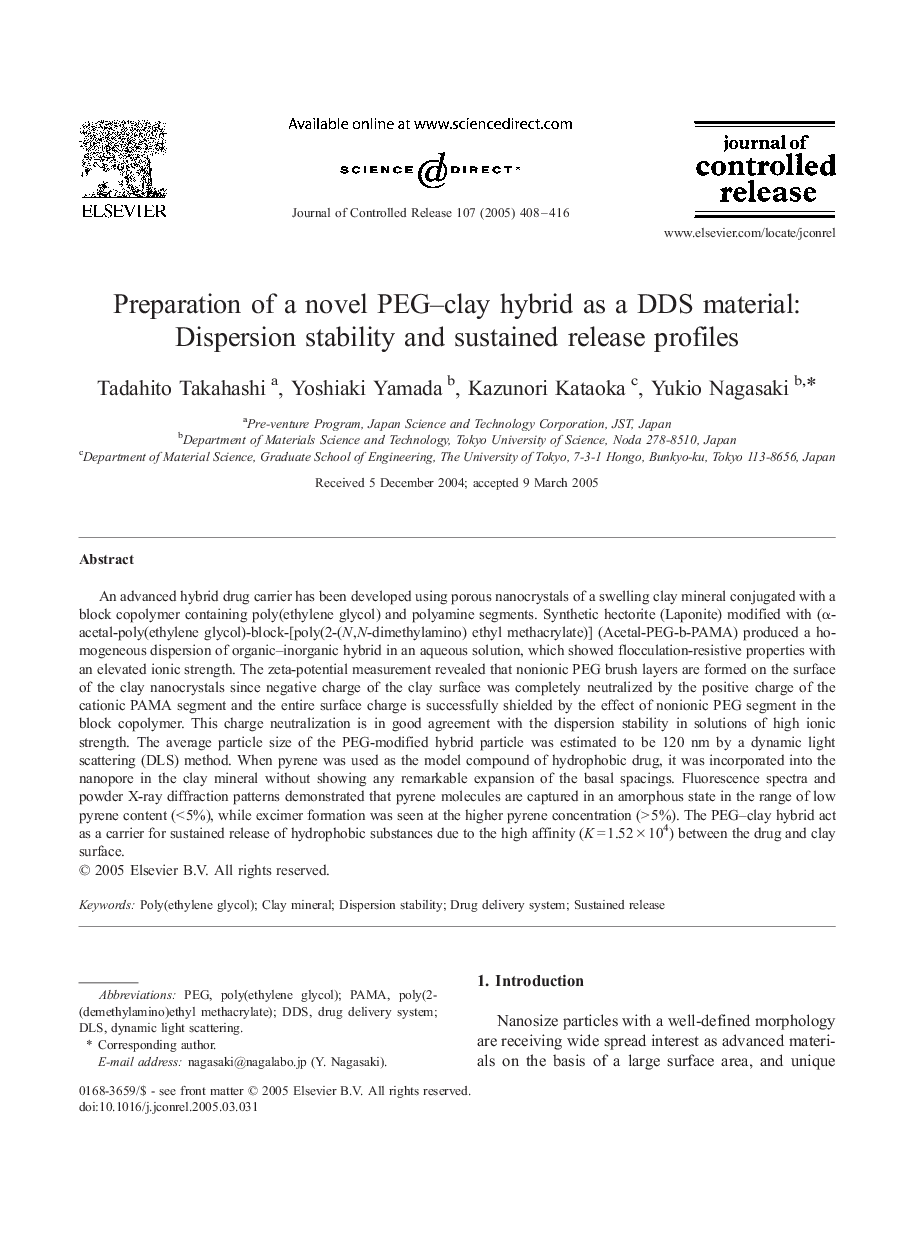| Article ID | Journal | Published Year | Pages | File Type |
|---|---|---|---|---|
| 10613342 | Journal of Controlled Release | 2005 | 9 Pages |
Abstract
An advanced hybrid drug carrier has been developed using porous nanocrystals of a swelling clay mineral conjugated with a block copolymer containing poly(ethylene glycol) and polyamine segments. Synthetic hectorite (Laponite) modified with (α-acetal-poly(ethylene glycol)-block-[poly(2-(N,N-dimethylamino) ethyl methacrylate)] (Acetal-PEG-b-PAMA) produced a homogeneous dispersion of organic-inorganic hybrid in an aqueous solution, which showed flocculation-resistive properties with an elevated ionic strength. The zeta-potential measurement revealed that nonionic PEG brush layers are formed on the surface of the clay nanocrystals since negative charge of the clay surface was completely neutralized by the positive charge of the cationic PAMA segment and the entire surface charge is successfully shielded by the effect of nonionic PEG segment in the block copolymer. This charge neutralization is in good agreement with the dispersion stability in solutions of high ionic strength. The average particle size of the PEG-modified hybrid particle was estimated to be 120 nm by a dynamic light scattering (DLS) method. When pyrene was used as the model compound of hydrophobic drug, it was incorporated into the nanopore in the clay mineral without showing any remarkable expansion of the basal spacings. Fluorescence spectra and powder X-ray diffraction patterns demonstrated that pyrene molecules are captured in an amorphous state in the range of low pyrene content (< 5%), while excimer formation was seen at the higher pyrene concentration (> 5%). The PEG-clay hybrid act as a carrier for sustained release of hydrophobic substances due to the high affinity (K = 1.52 Ã 104) between the drug and clay surface.
Keywords
Related Topics
Physical Sciences and Engineering
Materials Science
Biomaterials
Authors
Tadahito Takahashi, Yoshiaki Yamada, Kazunori Kataoka, Yukio Nagasaki,
